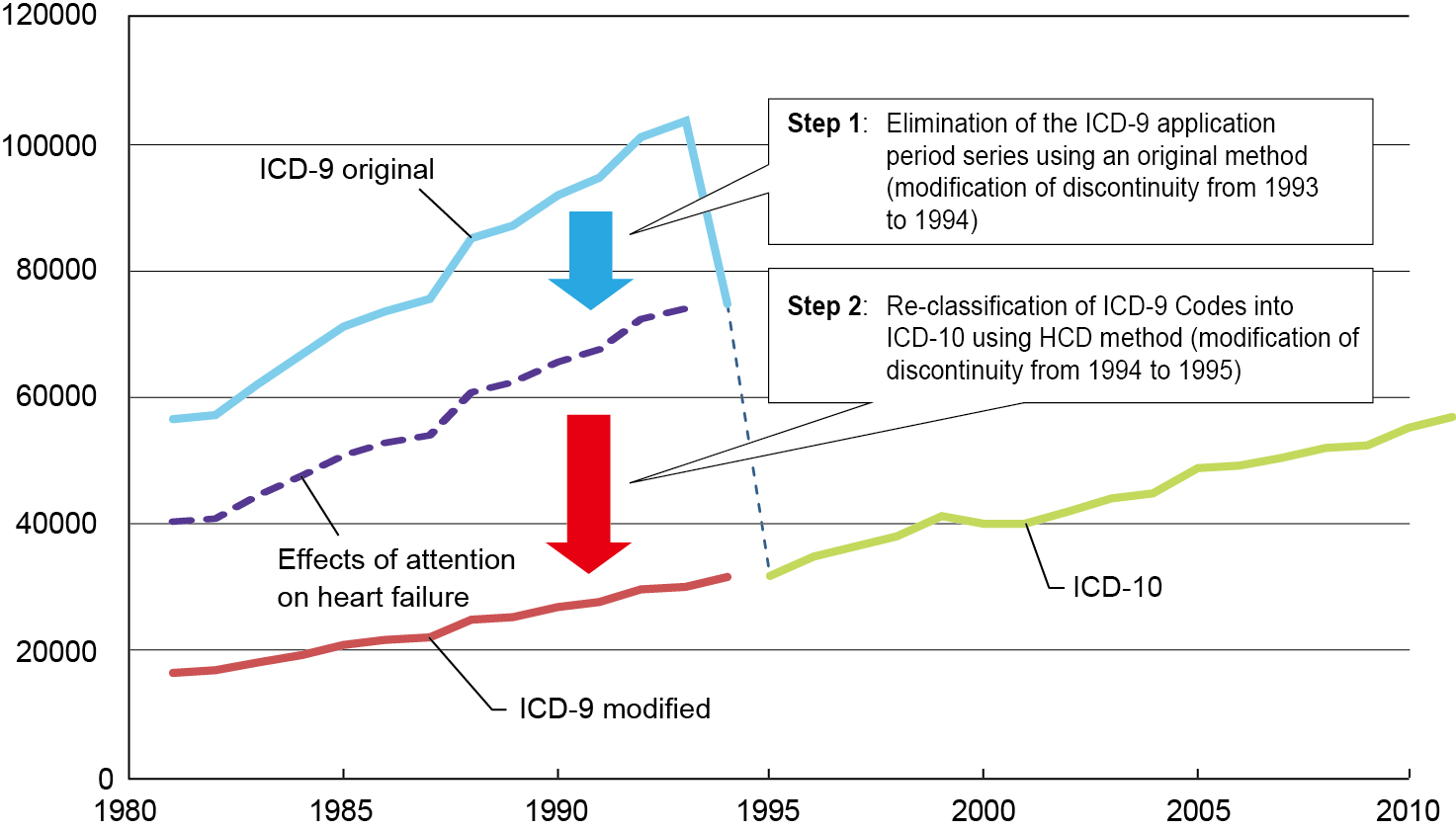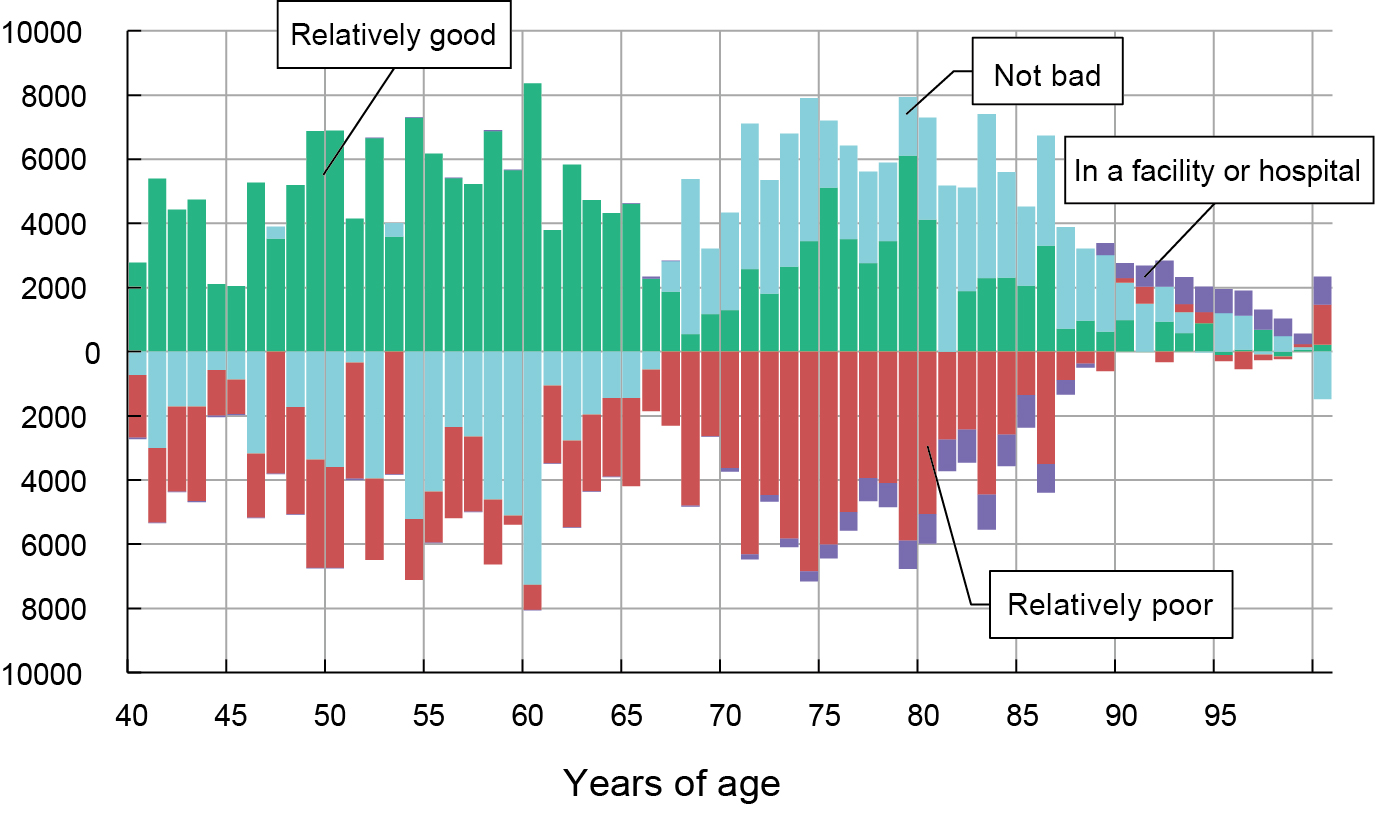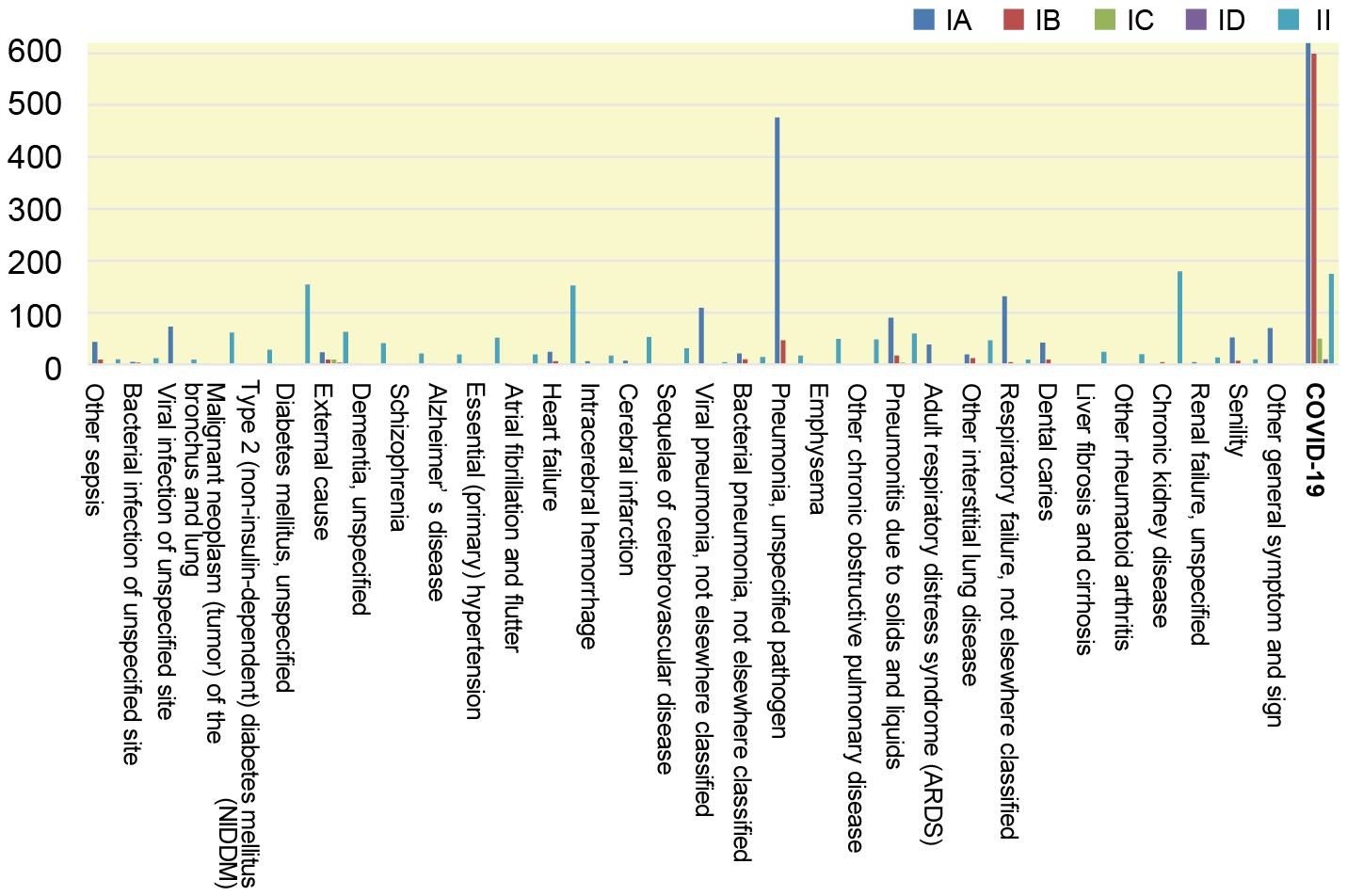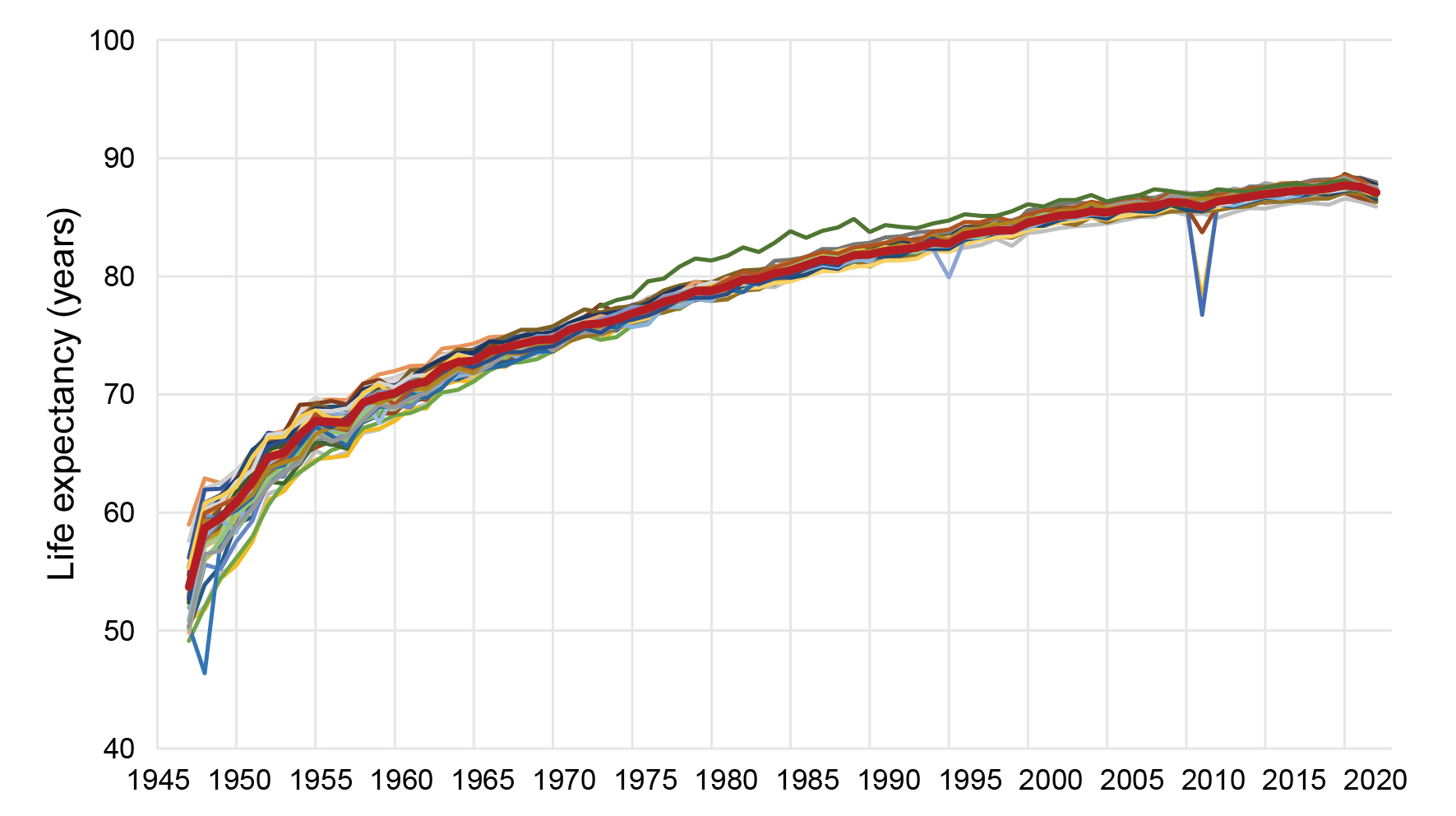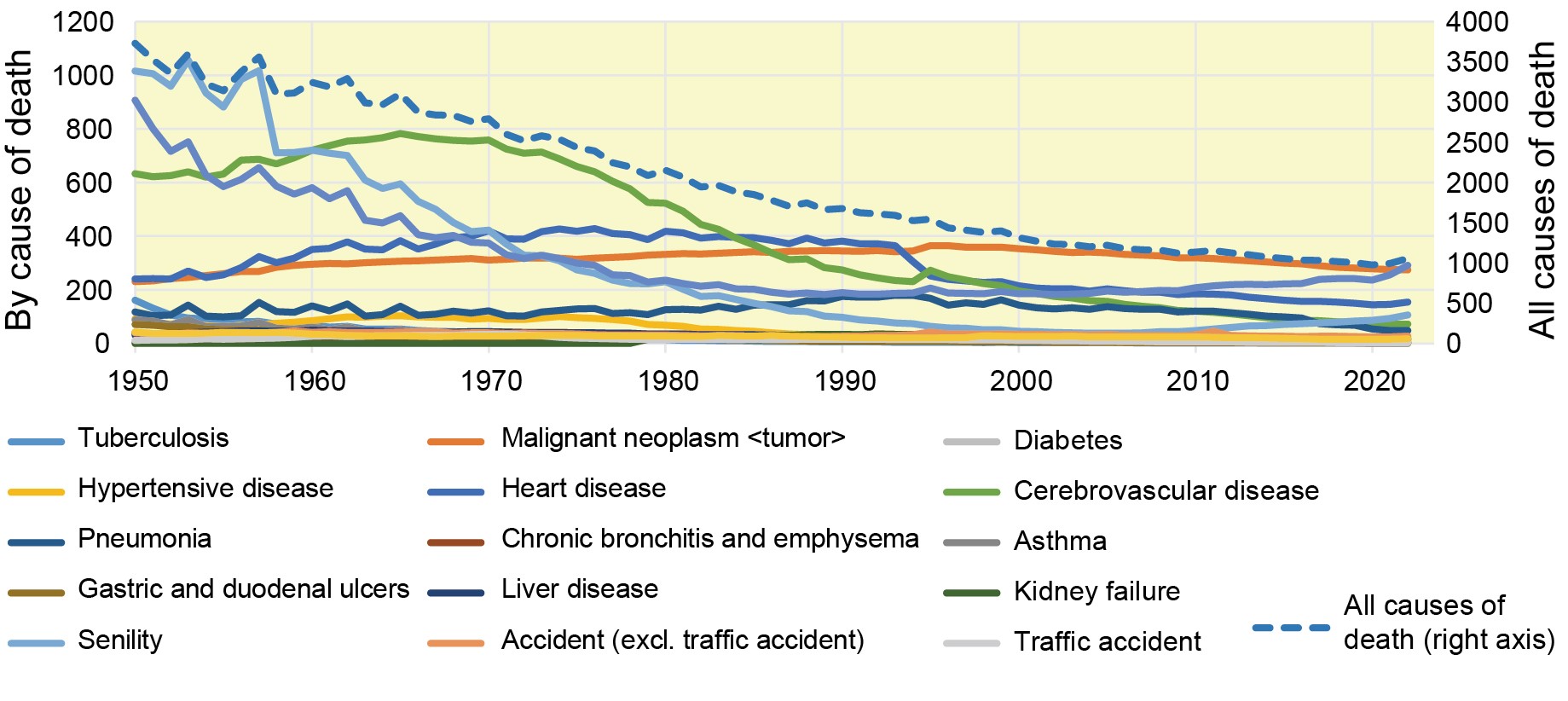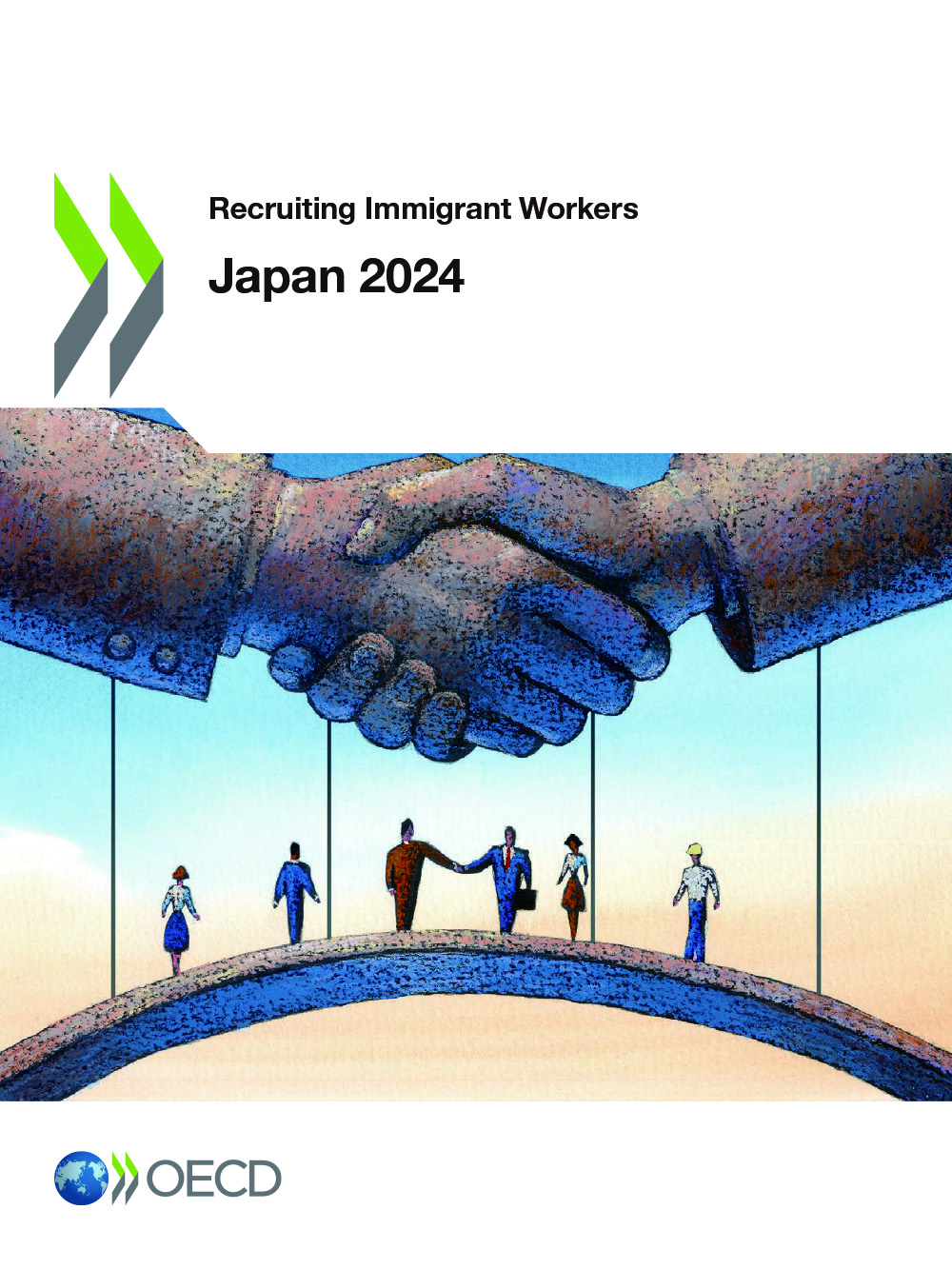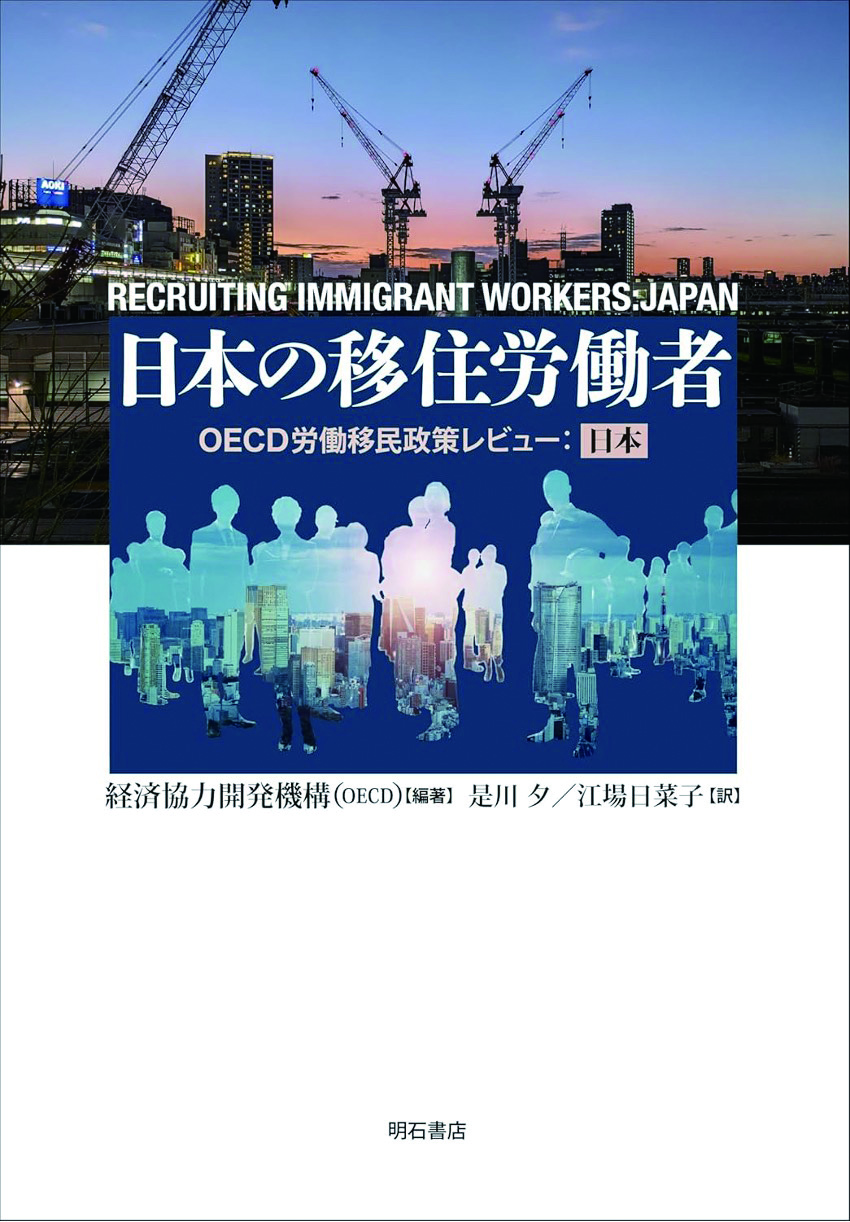
| 1. Research for a society in which everyone is able to participate A Comprehensive Study on the Realization Strategy of Japan's Plan for Dynamic Engagement of All Citizens (FY2017-) [In-house project] |
|
A key concept toward realizing the Plan for Dynamic Engagement of All Citizens is to create a “virtuous cycle of sustainable growth and distribution driven by inclusion and diversity.” Thus, it is important to enhance support for those who have difficulties in social participation, which includes those who are raising children or are caring for the elderly. This research project studies the circumstances in which support is needed for persons who do not have the means to support themselves, including cases where there are barriers to social participation and also those facing financial hardship, those with a heavy burden of daily household chores, and those with inconsistent home care. The project researches ideal ways of implementing various measures from an empirical perspective on 1) the inclusion of young people, 2) support for children and child-rearing, and 3) the inclusion of persons with disabilities, by examining the current state of lifestyle support needs and their factors. Empirical Research on Inclusion of Younger Generations
A comparative analysis on the support needs of the “employment Ice Age” generation has been implemented, based on
group interviews targeting those aged from 36-45 years old, 20-35 years old, and 46?60 years old, respectively as of
2017. The research also identifies the actual situation of consultation from counselors of the same generation from the
consultation desk for services and support for needy persons and studies the issue of support to stabilize their lives.
The table below illustrates the difference in the important livelihood support needs by regions in which people of the
“Ice Age” generation are living.
●Priorities of livelihood support needs in the non-regular employment “employment Ice Age” generation (unmarried) group

Source: National Institute of Population and Social Security Research, “Comprehensive Research aimed at Realizing the ‘Plan for Dynamic Engagement of All
Citizens: Report on Group Interviews Relating to the Support Needs of the Employment Ice Age Generation,” 2019, p. 59.
Empirical Research on Support for Children and Child-rearing
This research quantitatively and qualitatively analyzes the records of abuse consultations, which detail the circumstances
of children, guardians, households, etc. before and after the occurrence of abuse, and examines the circumstances
leading to difficulties in rearing children and issues of the provision of support. The table below shows the variation in
the items of the consultation records of the surveyed child counseling centers A-F, H, I.
●Comparison of basic information in child abuse consultation records across the surveyed child counseling centers (○
indicates that there is a description in the document)

Source: ENDO Hisao, NODA Masato, TOMA Kota, supervisor, National Institute of Population and Social Security Research, ed., “Roles and Issues
of Child Guidance Centers in Japan: Analysis of Support, Cooperation and Collaboration Based on Abuse Counseling Record Documents,”
University of Tokyo Press, 2020, p. 188.
|
| 2. Demographic and interdisciplinary research on Japan’s ultra-longevity Modeling and Comprehensive Analysis of Population, Economy and Society of Ultra-Longevity (FY2020-) [In-house project] |
||||||
|
The National Institute of Population and Social Security Research has conducted demographic and interdisciplinary analysis of Japan’s longevity. With the increase of the life expectancy, the Institute conducts research relating to the comprehensive data analysis and modeling of demographics, the economy, and the ultra-longevity society, such as promoting research on the relationship between the development of extended longevity in Japan, one of the world’s countries with the longest-lived citizens, and healthy life period, such as the extended healthy life expectancy. Through this research, the Institute seeks remedies for the coming hyper-aged society, and disseminates our research within Japan and abroad. Regarding the Japanese Mortality Database (JMD), which has been created and is updated as part of this project, please refer to its description found later in this pamphlet.
|
| 3. Japan’s first database specializing in mortality research Japanese Mortality Database (JMD) |
||
|
This database has been created as part of the Institute’s “Modeling and Comprehensive Analysis of Population, Economy and Society of Ultra-Longevity” (FY2020-) and related preceding projects. As a first attempt in Japan, we have developed the Japanese Mortality Database (JMD), which comprehensively reorganizes Japan’s life tables and is consistent with the Human Mortality Database (HMD) widely used worldwide. It is available on our Japanese and English websites. Unlike life tables that have been published by the Ministry of Health, Labour and Welfare, JMD recalculates and revises past data whenever calculation methods are updated. We are also working to improve the database beyond methodology. For example, age-standardized mortality rates by cause of death have been added to data released since FY2022. In addition, prefectural life tables including not only five-year time intervals and five-year age intervals but also each year and age have been prepared and released since FY2023. Due to these features, JMD is used as fundamental data for setting mortality assumptions in the Institute’s future population projections, both nationally and regionally.
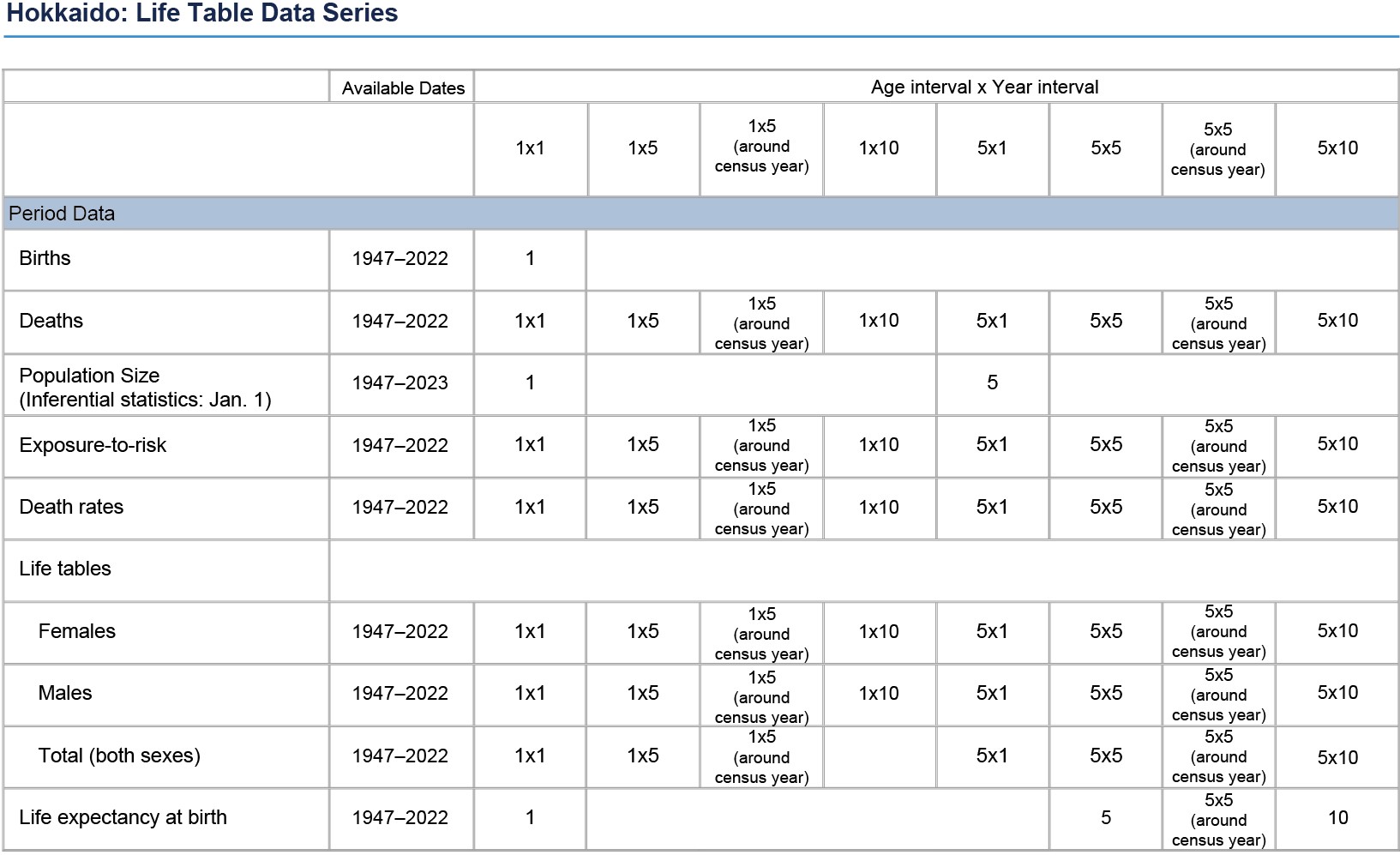 This mortality database has been
developed and is updated as part of the
“Modeling and Comprehensive Analysis
of Population, Economy and Society
of Ultra-Longevity” research project
conducted by the Institute. Please refer to
the previous page for its overview.
 |
| 4. Research for understanding intergenerational fl ows of economic resources through data
visualization The Japanese National Transfer Accounts (NTA) Project (FY2021-) [In-house project] |
|
In Japan, which is facing declining birthrates, an aging population, and increasing social security burdens, the question of how to allocate the income of the working-age population between the younger and older generations is a crucial issue that pertains to the upbringing of the next generation, the well-being of the working-age population, and the livelihood security of the elderly. The “National Transfer Accounts (NTA)” is a statistical framework developed in recent years with support from the United Nations to elucidate the impact of aging on social security and income transfers within households. The NTA can provide information on the outflow and inflow amount of income transfers in the public domain, such as pension, medical care, and long-term care, and monetary income transfers in the private domain, such as between family members and relatives, by sex and age. Continuously publishing NTA data will enable us to accurately understand the magnitude and changes in intergenerational transfers in the public and private spheres. This data can then be used to objectively evaluate and analyze the impact of demographic changes, such as declining birthrates and aging populations, and related policy changes on the sustainability of individual social security systems and intergenerational equity. The “NTA Project” at our institute is being advanced in close collaboration with external committee members, NTA officials from the United Nations and foreign governments, and NTA researchers from various countries. In March 2024, we published NTA data for fiscal years 2014 and 2019 (URL: https://www.ipss.go.jp/projects/NTA/index.html), and we plan to continue regularly updating and releasing the data. ●Overview of FY2019 NTA Results
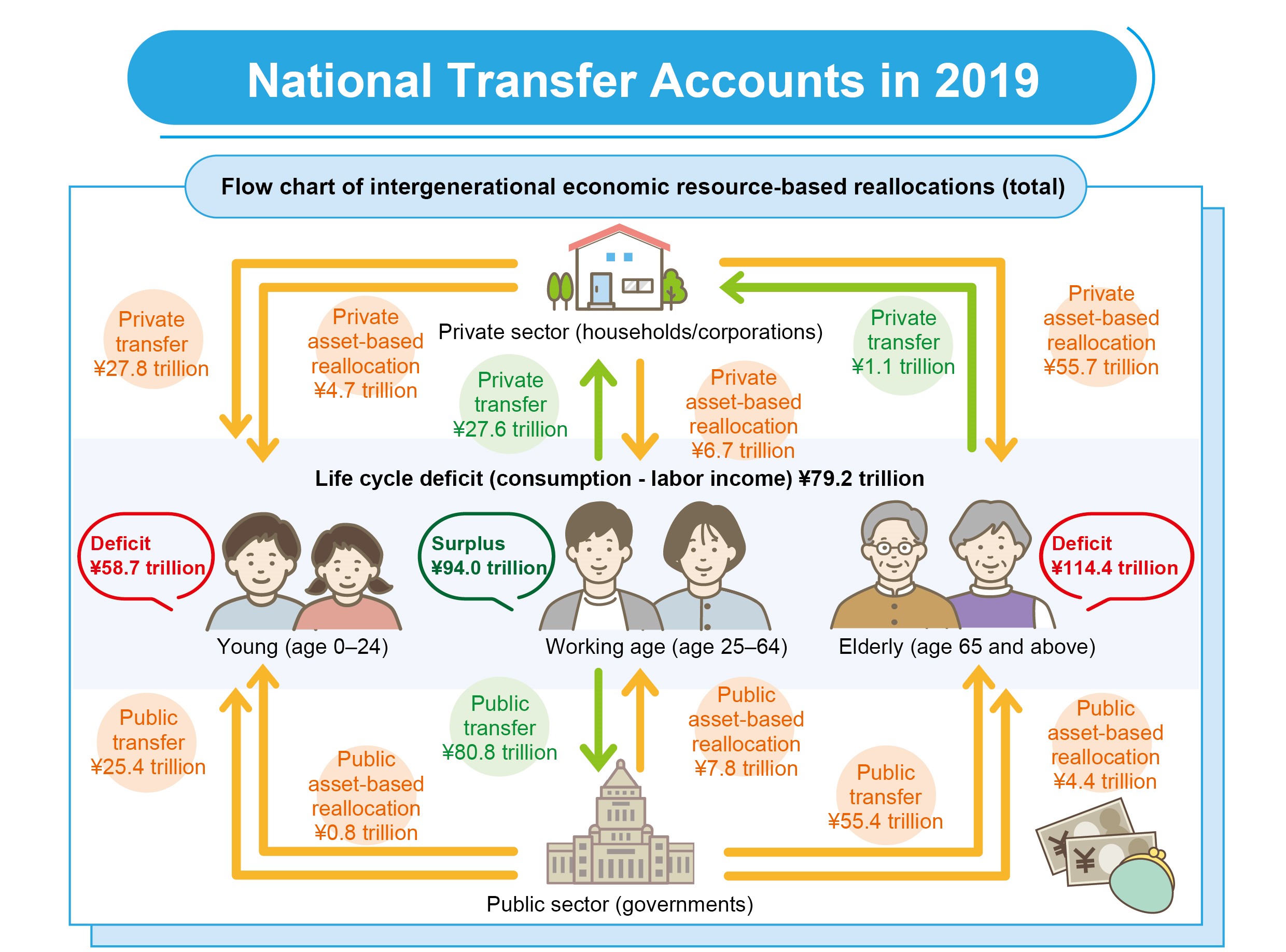 Source: “National Transfer Accounts in Japan: Results from Fiscal Year 2014 and 2019,” p. 15.
*In the above diagram, “life cycle defi cit” is the diff erence between consumption and labor income for each age group, where a positive value is defined as a “deficit” and a negative value a “surplus.” Through public and private intergenerational transfers and asset-based reallocations, the young and elderly populations had a net inflow of 58.7 trillion yen and 114.4 trillion yen, respectively, while the working-age population had a net outflow of 94 trillion yen. |
| 5. Shedding light on the characteristics of Japan’s foreign worker policy from an
international perspective Comprehensive Research on Japan’s Labor Immigration Policy from an International Perspective [In-house project] |
|||
|
The number of foreign workers in Japan exceeded two million in 2023, and the rate of increase has accelerated in recent years. The pathways for foreigner nationals to work in the country have diversified since the 1990s, with an upsurge in Nikkei Brazilians, the start of the technical intern training program (TITP) in 1993, the commencement of the specified skilled worker program (SSWP) in 2019, and a rise in the employment rate of international students in Japan. Against this backdrop, observers have described Japan as not having an immigration policy and accepting migrants in an exceptional manner. In light of this situation, we conducted a policy review in collaboration with the Organisation for Economic Co-operation and Development (OECD), an international organization highly specialized in immigration policy. The review yielded the following findings and recommendations. Main Analysis Findings (Summary)
1. Japan’s foreign worker policy is one of the policy options that were considered for adapting to labor market changes, and opened a way for some middle-skilled migrants (specified skilled workers) to reside permanently in Japan. 2. High-skilled migrants who choose to come to Japan (“Engineer/Specialist in humanities/International services” visa status) tend to remain in the country. 3. Japan has a high retention of international students compared to other countries. Main Recommendations from the OECD (Summary)
1. As TITP is under review,* its reform should retain the support provided to workers under today’s TITP. *A law on a training and employment program that replaces TITP was passed by the Diet on June 14, 2024. 2. SSWP, like TITP, is more heavily managed than labor migration programs in other OECD countries. SSWP was delayed by the pandemic but has since taken off. While SSWP has the potential to meet future labor demand effectively, it needs to rely on another program to allow migrants to acquire the necessary skills. 3. If SSWP is to develop scale, Japan must also expand its ability to recruit adequately prepared workers directly from origin countries. Stakeholders in Japan (business associations, employers, or public agencies) can follow the emerging model of “skills mobility partnerships.” This means investing in partner training institutions in origin countries to reinforce their capacity to provide candidates with the language and vocational skills to enter both SSWP and the training and employment program. Training should also be relevant for job opportunities in the origin countries so that it is attractive to more candidates and contributes to the skills base of the origin country.
|



